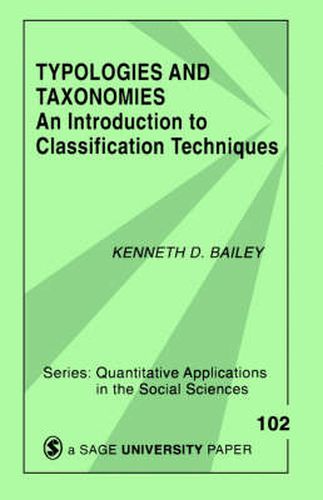Readings Newsletter
Become a Readings Member to make your shopping experience even easier.
Sign in or sign up for free!
You’re not far away from qualifying for FREE standard shipping within Australia
You’ve qualified for FREE standard shipping within Australia
The cart is loading…






How do we group different subjects on a variety of variables? Should we use a classification procedure in which only the concepts are classified (typology), one in which only empirical entities are classified (taxonomy), or some combination of both? In this clearly written book, Bailey addresses these questions and shows how classification methods can be used to improve research. Beginning with an exploration of the advantages and disadvantages of classification procedures including those typologies that can be constructed without the use of a computer, the book covers such topics as clustering procedures (including agglomerative and divisive methods), the relationship among various classification techniques (including the relationship of monothetic, qualitative typologies to polythetic, quantitative taxonomies), a comparison of clustering methods and how these methods compare with related statistical techniques such as factor analysis, multidimensional scaling and systems analysis, and lists classification resources. This volume also discusses software packages for use in clustering techniques.
$9.00 standard shipping within Australia
FREE standard shipping within Australia for orders over $100.00
Express & International shipping calculated at checkout
How do we group different subjects on a variety of variables? Should we use a classification procedure in which only the concepts are classified (typology), one in which only empirical entities are classified (taxonomy), or some combination of both? In this clearly written book, Bailey addresses these questions and shows how classification methods can be used to improve research. Beginning with an exploration of the advantages and disadvantages of classification procedures including those typologies that can be constructed without the use of a computer, the book covers such topics as clustering procedures (including agglomerative and divisive methods), the relationship among various classification techniques (including the relationship of monothetic, qualitative typologies to polythetic, quantitative taxonomies), a comparison of clustering methods and how these methods compare with related statistical techniques such as factor analysis, multidimensional scaling and systems analysis, and lists classification resources. This volume also discusses software packages for use in clustering techniques.